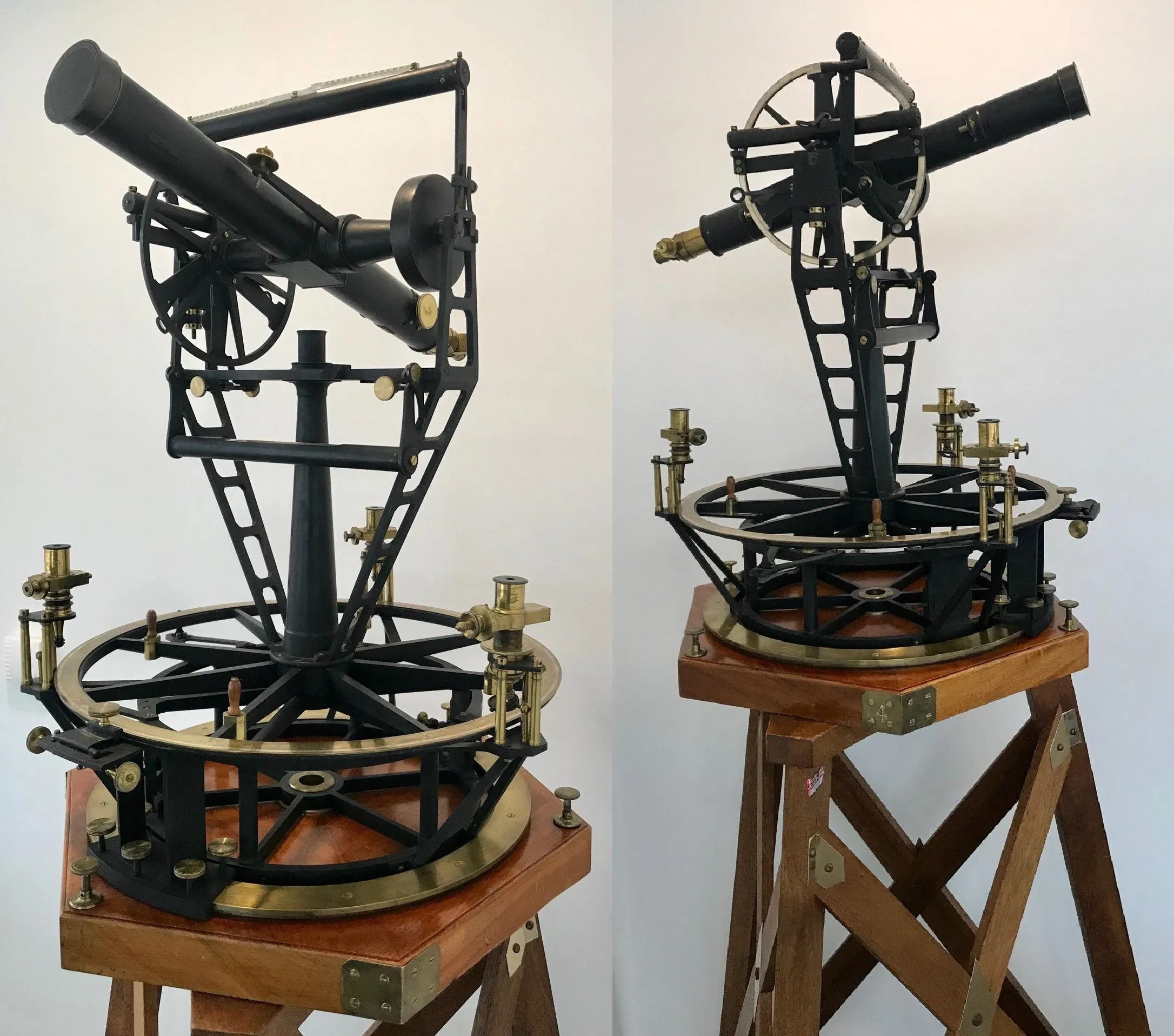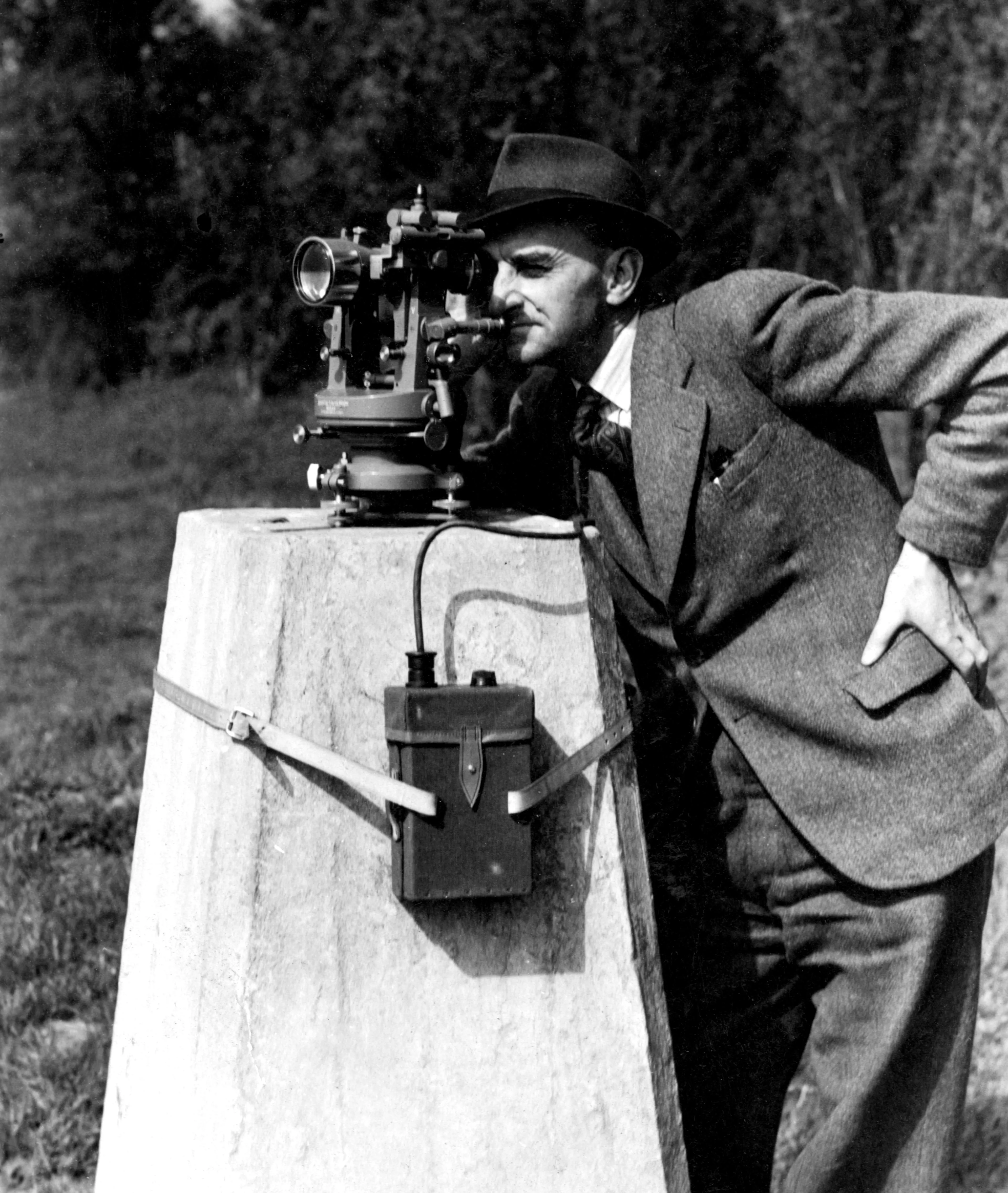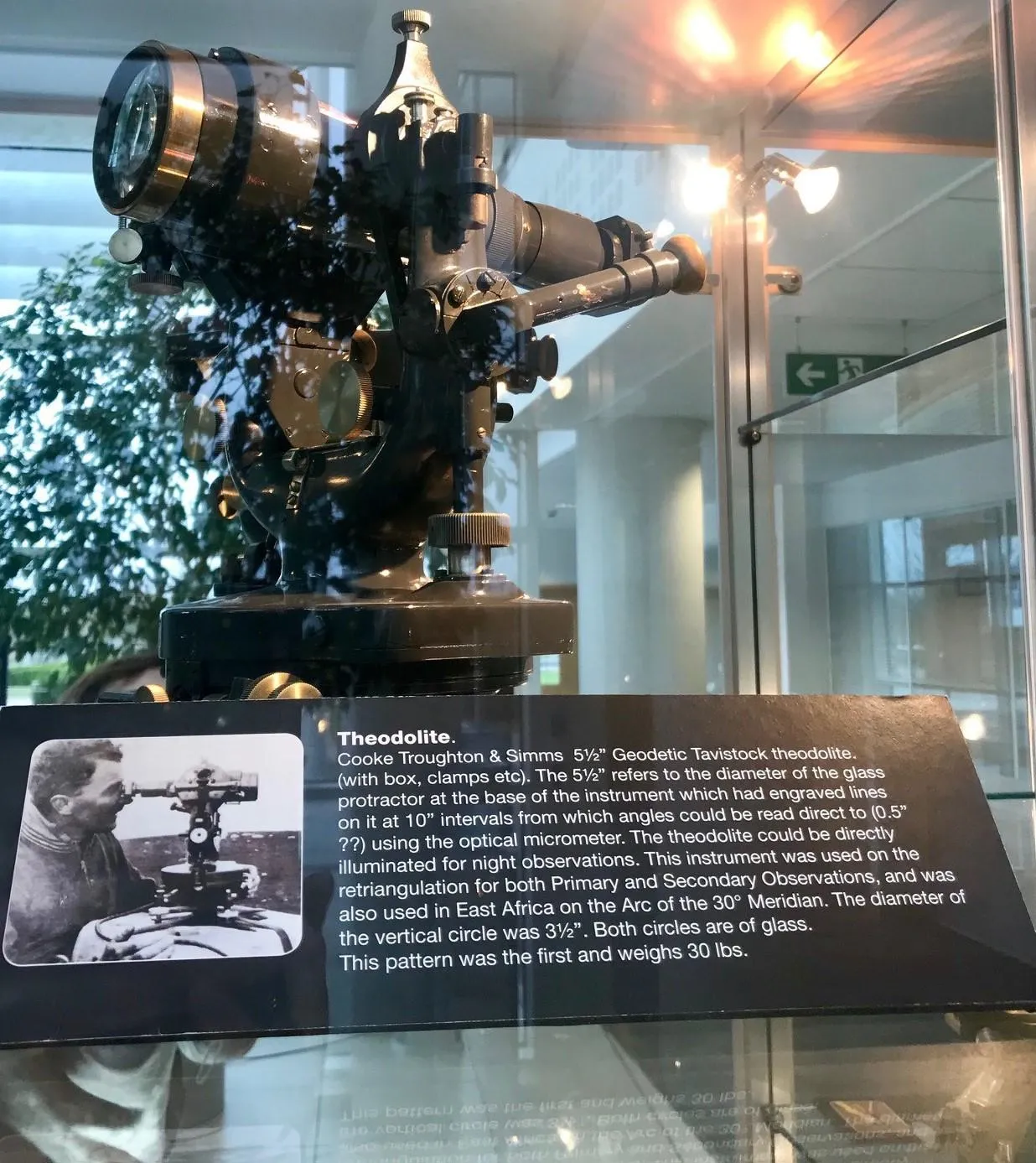An OS history of the theodolite
If you’re an avid reader of our blog or have some surveying knowledge, you may well have heard of a theodolite before
The use of the humble theodolite was the driving force behind the trig pillar network, and the seemingly simple concept of measuring lots of interconnected angles enabled the mapping of the entire country! Trig pillars are based purely on the necessity of stable, inter-visible control monuments to be occupied by theodolites. The top of an OS trig pillar has a brass insert featuring three grooves, often referred to as a “Spider”, enabling a theodolite mounted on a three-legged adaptor plate to automatically centre itself over the pillar.

The history
In 1784 William Roy, our remarkable founder, was commissioned by The Royal Society to geodetically connect the Royal Observatories of Greenwich and Paris to resolve a dispute over their relative positions.
Although technology was limited, Roy was convinced ‘the honour of the nation’ depended on creating a superior map of Britain unparalleled in its accuracy. To undergo this project, he needed a more sophisticated theodolite than had previously existed.
As you can imagine, creating something like that would take a very specific skillset. Nobody but Jesse Ramsden, the leading instrument maker of the day, could make this exceptional apparatus. Three years in the making and measuring three feet across, he produced the spectacular Great Theodolite!
Under the authority of the Master General of the Board of Ordnance, Roy began the London/Paris triangulation in 1785. By using angle measurements and at least a single measured baseline length, a whole country can be measured using the triangulation method. A dense framework of triangles with accurate coordinates at the nodes allows for accurate surveying of map features.

Utilising the theodolite and trigonometry, Roy created a network of accurately measured triangles that extended to France and then back to a verification baseline in Kent. Years later, this five-mile line formed the basis of the Principal Triangulation of Great Britain.
Praised by newspapers as an ‘incomparable engineer’, Roy was awarded the Copley Medal – the Royal Society’s highest accolade. Transforming his foresight into reality, the Board of Ordnance bought a second new (and improved) Ramsden theodolite. The date was 21 June 1791, which we recognise as the birth of Ordnance Survey.

The Retriangulation
Fast forward to 1936, Retriangulation is set to replace the now crumbling Principal Triangulation which will result in 6,500+ trig pillars being constructed across the whole country. Thousands upon thousands of angles needed to be observed and the instrument chosen for this important task was the Geodetic Tavistock theodolite manufactured by Cooke, Troughton & Simms of London and York. A direct descendant of the Great Theodolite but, after 150 years of progress, much more advanced, accurate and robust.
Since the Retriangulation was an observation campaign of the highest order, the 12 instruments ordered were subject to extensive testing and calibration before being deployed for the observations. These observations began in a field in Northamptonshire in April 1936.
How many Geodetic Tavistock theodolites are there?
Below is an extract from “A History of the Retriangulation of Great Britain” (published in 1967):
‘As far as can now be established, 12 of these instruments were used between 1936 and 1939. It is of interest that 6 are still in use, and have been used for such operations as the transfer of geodetic levels by trigonometrical methods, where the larger vertical circle of this early type of instrument is of great advantage. Of the reminder, 3 were buried near Dunkirk before the 19th Field Survey Company, R.E. was evacuated in 1940. Attempts were made to recover them in 1944, but without success. One instrument was destroyed when the Ordnance Survey office at Southampton was bombed in 1940, and one was damaged rather less gloriously by being dropped from a steel tower in 1951. The other instrument is displayed in the Record Room of the Ordnance Survey at Chessington’.
The book also notes that a further 10 theodolites were purchased in 1946-47 that were of a lighter and more compact design. Despite this, the original model of instrument was still preferred not only to ensure the highest consistency of measurement, but the older, heavier instrument was more stable in the windy Highlands of Scotland!
How we survey Britain today
The gulf between the trusty theodolite and the modern OS NET and Global Navigation Satellite System (GNSS) technology we use now is almost unimaginable. However, it’s nice to note that fundamental positioning principles are never far away. At its heart GNSS uses trilateration, the cousin of triangulation, employing the observation of distances rather than angles to determine position. A demonstrable contrast between positioning using GNSS and with theodolites and triangulation is when we remeasured Ben Nevis in late 2015 and, as a result, found it had grown (but only a little bit!).
Global Navigation Satellite Systems
Discover how Global Navigation Satellite Systems (GNSS) enable us to capture position and timing information relative to national and international reference systems
Sharing the latest news about OS. We can license you to use OS maps in print, online and film format. For more information and resources for journalists, bloggers and media professionals, email pressoffice@os.uk or call 023 8005 5565.